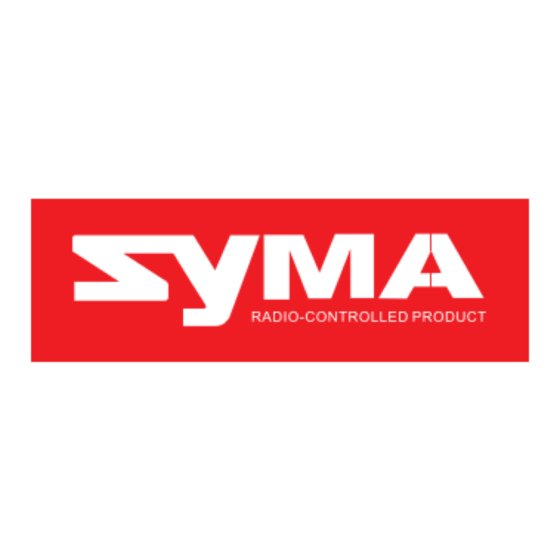
Advertisement
Quick Links
Wi-Fi 2.4G frequency range:2412MHz for 11b/g/n(HT20)
Senor
Senor
resolution ratio
focal length
Lens focal diameter ratio
viewing angle
minimum illumination
video
Image coding format
image resolution;
Maximum transmission rate of
image
Light frequency
V-REV
AWB
Wireless
network interface;
antenna gain
Working model
networking protocol;
networking protocol;
working temperature
storage temperature
working voltage
working current
OPERATION DISTANCE:
Use manual
CMOS,1/5"color
640*480(300k pixel)
3.6mm
F2.4
60。
1.0Lux@550nm
H.264
VGA(640x480)/ QVGA(320x240)/QQVGA(160x120)
25fps
50Hz、60Hz、Indoor and outdoor adaptive
Vertical and horizontal image flip
SUPPORTING
IEEE802.11b/g/n
2.0dB
AP
TCP/IP,DHCP,SMPT,HTTP,DDNS,UPNP
0 - 50C°,20% - 80%
,0% - 90%
-10° C ~ 60°
3.3V ~ 5V
200mA ~ 250mA
2-3M
1
Advertisement

Subscribe to Our Youtube Channel
Summary of Contents for SYMA LOG1612-JR
- Page 1 Use manual Wi-Fi 2.4G frequency range:2412MHz for 11b/g/n(HT20) Senor Senor CMOS,1/5”color resolution ratio 640*480(300k pixel) focal length 3.6mm Lens focal diameter ratio F2.4 viewing angle 60。 minimum illumination 1.0Lux@550nm video Image coding format H.264 image resolution; VGA(640x480)/ QVGA(320x240)/QQVGA(160x120) Maximum transmission rate of 25fps image Light frequency...
- Page 2 Search and install APP “WIFI GO”, swich No of airplane, the green light will be flashing in 5 seconds, and search to the "FPV_WIFI__XXXX" in mobile phone set, so light keeping when WIFI is connected,...
- Page 3 Warning: Changes or modifications to this unit not expressly approved by the party responsible for compliance could void the user’s authority to operate the equipment. NOTE: This equipment has been tested and found to comply with the limits for a Class B digital device, pursuant to Part 15 of the FCC Rules. These limits are designed to provide reasonable protection against harmful interference in a residential installation.













Need help?
Do you have a question about the LOG1612-JR and is the answer not in the manual?
Questions and answers